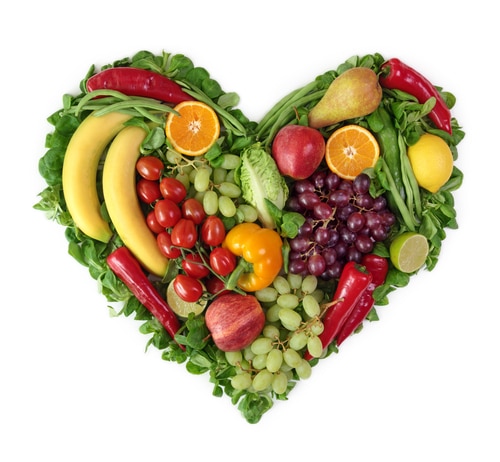 Fiber – most people don’t get enough of it. Experts recommend that people eat between 25 and 35 grams of fiber a day, but most people only get about half this amount. One reason is people don’t know the importance of fiber and which foods they should eat to meet their fiber requirements.
Fiber – most people don’t get enough of it. Experts recommend that people eat between 25 and 35 grams of fiber a day, but most people only get about half this amount. One reason is people don’t know the importance of fiber and which foods they should eat to meet their fiber requirements.
Types of Dietary Fiber
There are two types of dietary fiber – soluble and insoluble fiber. These fiber types are distinguished by how the intestinal tract handles them and the role each plays in health. A healthy, balanced diet should contain both fiber types.
Soluble Fiber
When soluble fiber enters the stomach, it dissolves in the watery environment of the stomach and intestines to form a thick, gelatinous material that slows down the movement of food through the digestive tract. It also delays the rate at which the stomach empties creating a sense of fullness. That’s why foods rich in soluble fiber fill you up quickly and keep you satisfied longer. They also help to moderate the rise in blood sugar and insulin that occurs with a high-carb meal. Soluble fiber even helps with weight loss by increasing satiety and reducing the rise in insulin after a meal.
Soluble fiber is also heart-healthy because it lowers levels of LDL-cholesterol that can clog and narrow arterial walls leading to heart disease. Soluble fiber isn’t easily digested when it enters the intestines, but bacteria can feast on it. When they do, they produce short-chain fatty acids that lower the risk of colon cancer. Healthy heart, weight control, and a more cancer-resistant colon – three good reasons to add more soluble fiber to your diet.
How to Get More of It: Soluble-Fiber Sources
The best sources of soluble fiber are beans, oats, berries, apple, barley, peas, bananas, carrots, root vegetables, and psyllium seeds. Start the day with a bowl of oatmeal topped with berries, and you’ll get a jumpstart on soluble fiber for the day.
Insoluble Fiber
Insoluble fiber is appropriately named because it doesn’t dissolve in water. Instead, it passes unchanged through the intestinal tract. As it moves through the intestines, it attracts water to it, which causes the stool to become softer and bulkier. This creates a laxative-like effect, reducing the risk of constipation and a common intestinal condition called diverticulitis. It may also lower the risk of colon cancer by speeding up the movement of waste through the intestines so it doesn’t stay in contact with the bowel wall as long.
How to Get More of It: Insoluble-Fiber Sources
The best sources of insoluble fiber are whole grain foods, wheat brans, seeds, and many fruits and vegetables. To get more insoluble fiber, eat fruit with the peel intact.
How to Increase the Amount of Fiber in Your Diet
As you can see, most fruits, vegetables, and whole grains are a source of both soluble and insoluble fiber, so you can’t go wrong eating more of these foods. The problem arises when people eat too many processed foods where the natural fiber has been removed during processing. A cup of brown rice contains 3.5 grams of fiber while a cup of white rice has less than a gram. Because of the additional fiber, brown rice is also more filling.
The two best ways to increase the amount of fiber in your diet is to cut back or eliminate most processed foods, and gradually increase the number of fruits and vegetables you eat. When you choose a snack, skip the potato chips and choose nuts instead. Buy whole-grain bread and whole-grain cereals or oatmeal. Substitute beans and lentils for some of the meat you eat each week. These changes will help boost the amount of fiber in your diet. It’s best to make these changes gradually since increasing fiber too fast can cause gas and bloating.
The Bottom Line?
Boost your health by eating more fiber-rich foods, and enjoy their many health benefits.
References:
Nutr Rev. 1991 Jul;49(7):195-203.
Medscape.com. “The Health Benefits of Fiber: Fiber’s Health Benefits”
Diabetes Care. 2006;29:976-981.
Related Articles By Cathe:
How to Add Both Kinds of Fiber to Your Diet
5 Types of Ancient Grains That Are Worthy Additions to Your Diet
The Two Types of Fiber and How to Get More of Each in Your Diet
Do All Types of Fiber Control Appetite Equally?
Fiber and Appetite: Newly Discovered Reason Fiber Kills Your Appetite
Can You Consume Too Much Fiber?
5 Whole Grains That Are Easy on Your Blood Sugar
Get Fuller & Curb Those Cravings with Plant-Based Protein
Do You Absorb All of the Calories You Eat?
This Dietary Component Was Identified as an “Under-consumed Nutrient of Public Health Concern”
All Fiber Isn’t Equal When It Comes to Reducing Your Appetite
Is All Dietary Fiber Beneficial to Your Health?

